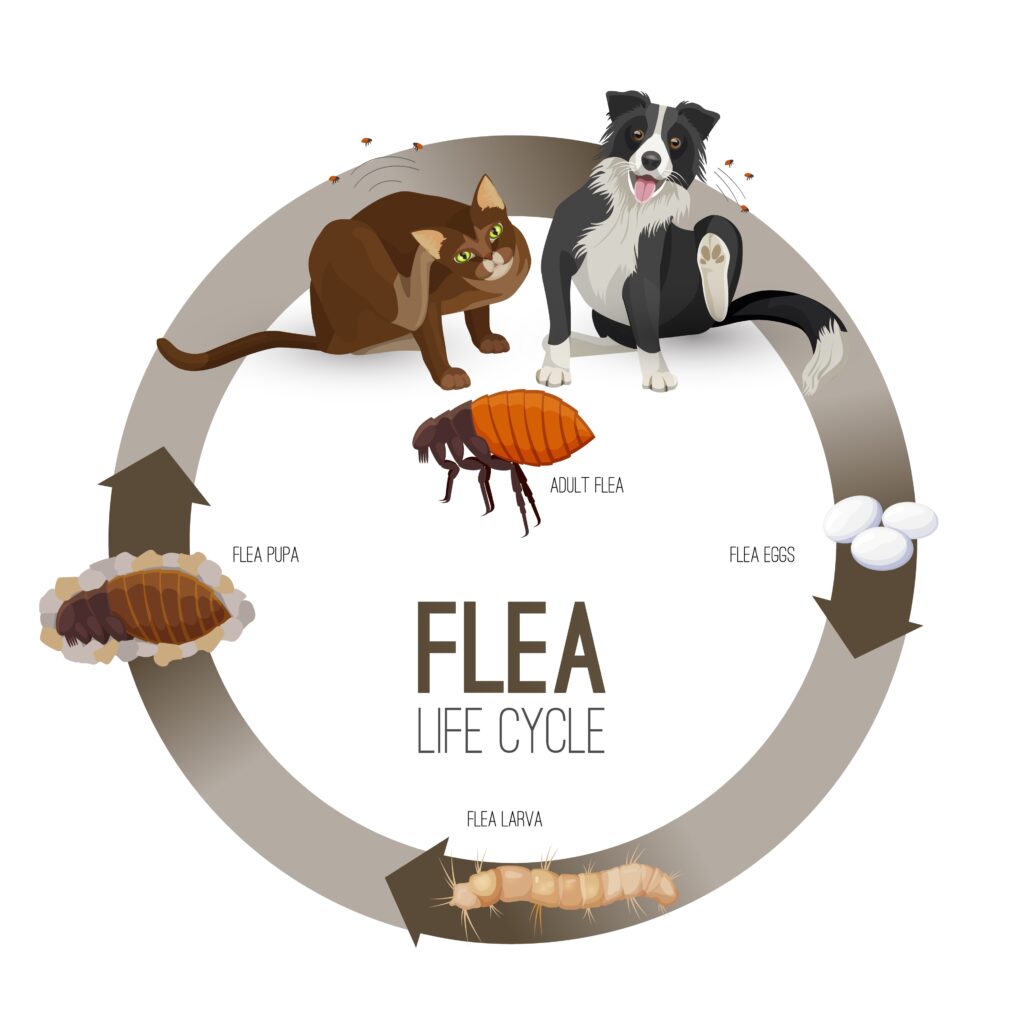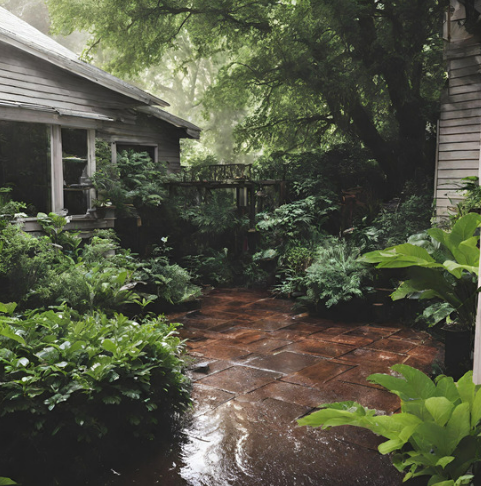Introduction: Unraveling the Myth
Does Rain Kill Fleas? Welcome to a revealing journey into the world of fleas and weather. A common question we often encounter is: Does rain kill fleas? This intriguing query is not just a matter of simple yes or no. Understanding the complex relationship between weather conditions, especially rain, and fleas is crucial for effective flea control. It’s a topic filled with misconceptions and partial truths. As leading experts in flea knowledge, we delve deep into this subject, combining scientific insights and practical experience. This article aims to clarify myths, present facts, and guide you towards efficient flea management strategies, regardless of the weather. Stay tuned as we explore the dynamic interaction between rain and these persistent pests. For an in-depth understanding of fleas and their behavior, visit the Centers for Disease Control and Prevention’s comprehensive guide on fleas here.
To Read More Insightful Flea Articles, Click Here!
Understanding Fleas: Life Cycle and Behavior
The Flea Lifecycle: A Four-Stage Journey

Fleas are not just momentary pests; they undergo a complex four-stage lifecycle. This journey begins with eggs, tiny and often unnoticed, laid by adult fleas on a host or in its environment. These eggs hatch into larvae, which shy away from light and feed on organic debris. The larvae then form pupae, encasing themselves in cocoons. Inside these cocoons, they metamorphose into the adult fleas we commonly recognize. This transformation is influenced by various factors, including temperature and humidity.
Flea Behavior: More Than Just Biting
Fleas are known for their pesky bites, but their behavior extends beyond this. They are experts at survival, exhibiting unique traits like incredible jumping abilities and a preference for warm, humid environments. Understanding these behaviors is key in targeting them effectively. Adult fleas spend most of their time on a host, feeding on blood, while the immature stages are often found in the host’s environment.
Environmental Preferences: Where Fleas Thrive
Fleas are not just indoor pests; they can thrive in various environments. Indoors, they prefer warm, carpeted, and upholstered areas that provide them shelter. Outdoors, they are found in shady, moist places like under shrubs or in leaf debris. These habitats offer ideal conditions for flea eggs and larvae to develop.
Understanding the lifecycle and behavior of fleas is vital for effective control. It’s not just about treating the visible adult fleas; it’s about targeting all stages of their lifecycle and their preferred habitats. For a detailed exploration of flea biology and behavior, the University of Kentucky’s Entomology Department provides an excellent resource.
The Impact of Rain on Fleas
Misconceptions vs. Reality: Rain’s Effect on Fleas
Rain’s impact on fleas is often misunderstood. While it’s true that heavy rainfall can drown adult fleas and wash away eggs and larvae, this is not the whole story. In fact, moderate rain can create ideal conditions for flea populations to flourish. Increased humidity and damp environments are perfect for flea development, particularly in the larval and pupal stages. Understanding this nuanced relationship between rain and fleas is crucial in managing flea infestations effectively.
The Lifecycle in the Rain: Stage-by-Stage Analysis
Let’s break down how rain affects each stage of the flea lifecycle. For eggs, heavy rain can be detrimental, washing them away. However, light to moderate rain can provide the moisture needed for eggs to thrive. Larvae, which prefer moist environments, can benefit from the increased humidity. Pupae, protected by their cocoons, are generally unaffected by rain. Adult fleas, though vulnerable to being washed away in heavy downpours, often seek shelter on their hosts or in protected areas.
The Aftermath of Rainfall: A Double-Edged Sword
After rainfall, we often see a surge in flea activity. The increased moisture creates ideal conditions for eggs and larvae. However, this spike in flea populations can be temporary. Continuous heavy rain can eventually lead to a decrease in flea numbers as it disrupts their lifecycle. Therefore, post-rainfall periods require vigilant flea control measures to manage the temporary surge in flea activity.
In conclusion, rain does not straightforwardly kill fleas. Its impact varies based on intensity and duration, affecting each lifecycle stage differently. For a comprehensive understanding of how weather conditions affect insects, refer to the Environmental Protection Agency’s guidelines on Weather and Pest Control. This resource offers valuable insights into how weather patterns influence various pests, including fleas.
Rainfall and Its Effect on Flea Habitats

Outdoor Flea Habitats: Rain’s Transformative Impact
Rain drastically alters outdoor environments, impacting flea habitats significantly. In outdoor settings, fleas thrive in damp, shaded areas such as under bushes or in tall grass. Moderate rain enhances these conditions, creating an ideal breeding ground for fleas. However, excessive rain can flood these habitats, potentially reducing flea populations. It’s a balance; while some rain can be beneficial for fleas, too much can be detrimental.
Indoor Flea Habitats: The Indirect Consequences of Rain
Indoors, the effect of rain on flea habitats is less direct but equally significant. Increased outdoor humidity can lead to higher indoor humidity, especially in poorly ventilated spaces. This creates a favorable environment for fleas, particularly in carpeted and upholstered areas. Additionally, pets and humans can bring in flea larvae or eggs on their clothes or fur, especially during wet conditions, inadvertently introducing them to indoor spaces.
Managing Flea Habitats Post-Rainfall
Understanding the impact of rain on flea habitats is key to effective flea management. After rainfall, inspect outdoor areas for signs of increased flea activity. Indoors, focus on maintaining low humidity levels and regular cleaning to disrupt potential flea breeding grounds. Ensuring good ventilation and using dehumidifiers can help keep indoor environments less hospitable to fleas.
Rainfall significantly influences flea habitats, both outdoors and indoors. By understanding these effects, one can implement targeted strategies to manage and reduce flea infestations. For more detailed information on managing pests in various environmental conditions, the National Pest Management Association offers valuable insights on their website here. Their resources include expert advice on pest control in different weather scenarios, tailored for both homeowners and professionals.
Preventive Measures and Flea Control Strategies
Indoor Flea Prevention: Creating Unfavorable Conditions
Effective flea management starts indoors. Regular cleaning, including vacuuming carpets and furniture, significantly reduces flea eggs and larvae. Use flea control products, like sprays or powders, specifically designed for indoor use. Keeping humidity levels low indoors is crucial, as fleas thrive in moist environments. Consider using dehumidifiers in damp areas of your home. Additionally, regularly washing pet bedding and keeping pets on preventative flea treatments can drastically reduce the likelihood of indoor flea infestations.
Outdoor Flea Control: Targeting Flea Hotspots
Outdoors, focus on areas where fleas are most likely to thrive. Trim vegetation and keep grass short to reduce shaded, moist areas where fleas can breed. Use environmentally safe flea control products in your yard, particularly in areas where pets spend time. Ensure proper drainage of your property to avoid standing water, which can be a breeding ground for fleas. Involving a professional pest control service can also provide targeted treatments for your outdoor space.
Flea Control During and After Rain
Rain can necessitate specific flea control measures. After rainfall, inspect both indoor and outdoor areas for signs of increased flea activity. If you detect a surge in fleas post-rainfall, consider implementing additional control measures, such as increased vacuuming indoors and more frequent application of flea control products outdoors. Remember, consistency is key in flea management, especially in fluctuating weather conditions.
Implementing these preventive measures and strategies is crucial for effective flea control, regardless of the weather. By creating unfavorable conditions for fleas and regularly using appropriate control methods, you can significantly reduce the risk of flea infestations in your home and yard. For further guidance on flea prevention and control, the American Kennel Club provides excellent tips and strategies on their website here. Their resource is particularly useful for pet owners looking to protect their pets and homes from fleas.
Conclusion: Effective Flea Management Regardless of Weather
Key Takeaways: Understanding and Action
As we’ve explored, the relationship between rain and fleas is complex and multifaceted. While rain can influence flea populations, it’s not a definitive solution to flea problems. The key to effective flea management lies in understanding flea behavior and lifecycle, and how different weather conditions, including rain, impact these factors. Armed with this knowledge, you can take proactive steps to prevent and control flea infestations, ensuring the health and comfort of your household and pets.
Proactive Flea Control: A Continuous Effort
Effective flea control is an ongoing process, not a one-time action. Regularly inspecting your home and yard, maintaining cleanliness, and using appropriate flea control products are essential practices. In times of changing weather conditions, especially after rainfall, be extra vigilant. Adjust your flea control strategies as needed to respond to increased flea activity.
Encouragement for Ongoing Vigilance
We encourage you to stay informed and proactive in your approach to flea management. Remember, fleas are persistent, but with consistent efforts and the right strategies, you can effectively manage and control their populations. For further information and detailed guidance on flea control, visit the Environmental Protection Agency’s website on Integrated Pest Management. This resource provides comprehensive strategies for managing pests in a sustainable and effective way.
In conclusion, rain can affect flea populations, but it is not a standalone solution to flea problems. Understanding the nuances of flea behavior and environmental impacts, combined with consistent, informed control measures, is essential for successful flea management. Stay vigilant, informed, and proactive in your approach, and you’ll be well-equipped to handle flea challenges, rain or shine.